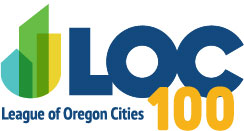LOC News
$1.9 Trillion – That’s a Big Number!
Perhaps the best and simplest way to start this article is, “local governments won.” The latest COVID-19 funding is unprecedented, not just because of the level, but also the direct distribution of funds to cities and counties. That’s never happened.
Investing in education and grass roots advocacy can work!
A big reason for this victory is the effort of the National League of Cities (NLC), which has been relentless and nimble. At every step of the way, the NLC’s focus on representing cities was laser sharp and always on the lookout for ‘what’s next.” Despite falling short throughout last summer and fall to get direct payments to cities, the NLC’s efforts paid off this week in a big way: securing $130 billion in federal support for every city, town, village, and county across the country with the final passage of the American Recovery Plan (ARP), signed by President Biden on Thursday.
Last summer, when the NLC was unable to get direct payments to local governments in the second stimulus bill, they pivoted to a full-blown national campaign, targeting states with congressional leaders who were skeptical of supporting any effort to help local governments. The LOC joined the effort financially, and with grass roots advocacy that included a constant message for our congressional partners to support the effort to help cities. This campaign grew nationally and became a combination of support for local governments and states. The LOC’s financial investment established a communication network on the scale of a national campaign. It paid off with the final passage of the ARP and the delivery of more than $4.2 billion in direct federal support to Oregon.
By the Numbers:
- State of Oregon total = $4.2 billion
- State of Oregon = $2.6 billion
- Metro cities, cities greater than 50K = $437.7 million
- Other cities = $242.9 million
- Counties = $818 million
- Capitol Projects (State) = $155 million
What’s Next?
The next steps in this aid package will take time to roll out. The funds will be direct payments to cities with a population greater than 50,000, as well as to counties and the state. For those cities not receiving a direct payment, states have 60 days to distribute one-half of the funds this year and the other half to cities in March/April of 2022. States have no authority to modify, redistribute, or tell cities what to do with their respective funds. It’s up to each city to determine what makes sense and what priorities are needed for their communities.
What Should Cities do with the Money?
Additional direction is expected from the federal government, but it’s safe to say the use of these funds will not be as limited as with the CRF$ that were available last summer. From virtual meetings with Oregon’s Congressional delegation, the best advice for cities is to be aware of the eyes that will be watching how the funds are spent. Consider looking at spending opportunities as community investments, and how best to balance those choices with the priorities that fit for community needs.
The short list for what you can use the ARP funds for includes:
- Responding to the COVID-19 public health emergency;
- Providing premium pay to essential workers;
- Offsetting lost revenues to provide essential government services; and
- For water, sewer and broadband infrastructure.
The short list for what you cannot spend the funds on includes:
- Excludes reducing taxes by legislation, regulation, or administration; and
- Excludes deposits into pension funds.
Transparency is Key
When the LOC was advocating for a local government share of CRF funds throughout last summer, legislative leadership raised critical questions about whether cities were prepared or capable of making the right choices. The response was simple: Of course they are, and in fact, cities are well prepared to make local funding decisions because that’s what they do every day. Cities know their community, and they understand what those priorities are. The LOC’s advocacy team was heartened to hear about the cities that publicly shared their spending choices of CRF funds, and it makes sense for other cities to consider the value of transparency in spending as they start to make choices about the ARP funds they will be receiving.
Thanks for an Amazing Effort
Thank you to our city leaders statewide who picked up the phone, sent an email, or participated in a town hall. The collection of this individual effort created momentum, and in the end, achieved a generational recovery effort to communities and people who need it the most. Take time out to also thank Oregon’s Congressional delegation that supported the bill as well. Their votes and advocacy were of course key to moving the final version in both chambers.
Summary of Payments to Cities
The NLC has supplied a spreadsheet showing estimated payments for each of the cities in Oregon, you can find it here.
DISCLAIMER: These are estimates from the House Committee on Oversight, not final allocations. Issues have been found in other state allocations that may or may not change Oregon allocations.
View NLC's statement on the passage of the American Rescue Plan
Contact: Jim McCauley, Legislative Director - jmccauley@orcities.org

